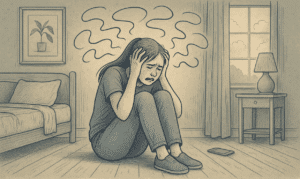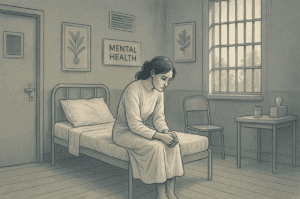Peer Pressure vs. Healthy Choices
Peer pressure is a constant companion in a teen’s life, shaping decisions and often testing their ability to make healthy choices. It’s a pivotal time when they’re just figuring out who they are and how to fit into the world.
Let’s be real: the impact of friends, trends, and social circles can lead teens into challenging waters. By understanding how peer pressure shapes their choices, adults can step up to help guide them toward decisions that prioritize their well-being.
It’s all about empowering teens to say no to risky behaviors and choose healthier activities instead. There are effective strategies within reach.
Through open conversations and clear boundaries, we can help teens get through social pressures, fostering their growth into confident, independent thinkers ready to take on the world!
Understanding Peer Pressure
Unfortunately, teens and peer pressure go hand in hand. Let’s make sure we’re all on the same page about the basics before we dive in.
What is Peer Pressure?
Peer pressure is like a subtle wave, sometimes it guides gently and other times it crashes with intensity. At its core, peer pressure involves the influence that peers have on one another.
Common Situations of Peer Pressure
Peer pressure is like an invisible thread woven into a teenager’s social quilt. Teens encounter it in various situations that can challenge their ability to make healthy choices:
- In Social Settings: Parties, gatherings, or even a casual hangout can turn into arenas of peer influence, where the need to ‘fit in’ overshadows personal preferences.
- At School: From the lunchroom to the hallways, school can feel like a pressure cooker where students must conform to unspoken social rules or risk standing out.
- During Extracurricular Activities: Whether it’s sports, clubs, or arts, activities are supposed to be fun and engaging. However, they also often come with their unique set of peer pressures around performance or participation.
Recognizing these situations helps caregivers offer guidance and support, steering teens to make choices that reflect who they really are. Far from just surviving, understanding how teen peer pressure works is the key to thriving during the adolescent years.
How Does Peer Pressure Affect Teens?
Peer pressure can impact teens in huge ways, shaping how they act, think, and feel. On the bright side, it can encourage them to try new things, study harder, or get involved in community service. But more often than not, it leads them down risky paths like substance abuse or cheating, or jumping on the latest trends without thinking about the consequences.
The push to fit in can create stress and anxiety, making them feel like they have to hide their true selves just to blend in.
This constant struggle between fitting in and being themselves can take a toll on their mental health and self-esteem. That’s why it’s so important to help them build resilience and confidence to tackle these challenges head-on.
Making Healthy Choices
Navigating teen peer pressure can be challenging, but maintaining balance and making healthy choices is key. Let’s look at strategies that can help keep them on their own path.
Establishing Personal Values
Values are like a personal compass guiding teens through life. When they define what truly matters to them, making healthy decisions in the face of peer pressure becomes much easier.
So, how can you help your teen identify their personal values?
- Self-Reflection: Encouraging teens to jot down what they stand for and believe in can be a starting point. Whether it’s honesty, kindness, or determination, knowing their core values can guide actions.
- Role Models: Looking to figures they admire can help identify desirable traits and principles. Who do they look up to, and why?
- Values-in-Action: Teens should think about how these values play out in their day-to-day decisions. If kindness is key, how does that influence the way they treat others?
This reflective process helps teens build a strong foundation, making sure they make choices that really match who they are instead of giving in to peer pressure.
Situational Awareness
Just like you can tell when it’s about to rain, being aware of certain situations can really help teens spot peer pressure and make smart choices. Here’s how they can build that situational awareness:
- Knowing Their Surroundings: Encourage them to be aware of who they are with and what environments make them feel pressured. Recognize that certain places, like parties or specific groups on social media, might trigger the urge to conform.
- Evaluating Friend Groups: It’s important for teens to reflect on their friendships. Are their friends pushing them towards risky behaviors, or are they supportive of healthy choices?
Being mindful of these situations helps them identify potential pressure points before they become overwhelming. Teens and peer pressure often go hand in hand, but understanding the environment can be a powerful tool in making positive choices.
Practicing Assertiveness
Peer pressure is powerful, but so is a firm “no.” Teaching teens the art of assertiveness can be lifesaving in resisting unhealthy behaviors. Here’s how they can stand their ground:
- Clear Communication: Assertive communication doesn’t mean being aggressive; it’s all about being firm yet respectful. Learning to say “no” without guilt or the need to explain yourself is a valuable skill to develop.
- Body Language: Don’t forget what is being said without words! Things like making eye contact, standing tall, and keeping a calm demeanor really back up a message.
- Practice Makes Perfect: Just like any other skill, being assertive gets easier with practice. Try role-playing with friends or trusted adults—it can boost their confidence and help saying “no” feel more natural.
Firmly grounded in their stance, teens can confidently tackle situations involving peer pressure, making decisions that align with their values.
Take a Moment to Think
In the whirlwind of teen life, pausing can sometimes be the most powerful action. Before jumping into a decision, it’s important to weigh the consequences. This might seem simple, but in the moment, it’s often overlooked.
- The Pause Button: Encouraging a “pause” lets teens think about potential consequences without impulse. What’s at stake? What could go wrong?
- The What-Ifs: Considering other outcomes helps to clear paths muddled by peer influence. Would they still make the same choice if their friends weren’t watching?
- The Long Haul: Will the choice they’re about to make still matter tomorrow? Next week? Next year?
By taking a moment to reflect, teens can avoid those impulsive decisions that come from peer pressure and make healthier, more thoughtful choices instead.
Choosing Positive Influences
The friends teens hang out with can really influence what they do. It’s so important to encourage them to pick friends who lift them up and support their healthy choices.
- Quality Over Quantity: It’s not about having tons of friends; it’s about building genuine connections with a few who care about their well-being.
- Inspirational Surroundings: Being around peers who inspire and push them towards personal goals can have a ripple effect on their own behavior.
In choosing these positive influences, teens can create an environment that encourages healthy, supportive competition, making resisting peer pressure much easier.
Parental Guidance and Support
Parents play a crucial role in helping kids build the confidence to stand up to negative influences. Yes, peer pressure can sway teens’ choices, but families can provide the support and guidance they need to succeed.
Open Communication
Parents should feel comfortable talking about things like peer pressure and making healthy choices. What questions do you think teens might have? What situations are they dealing with that you might not even be aware of? It’s all about encouraging them to share their thoughts and feelings without any judgment.
- Listen actively: Show openness to their concerns and validate their feelings.
- Ask questions: Use questions as a tool for engagement rather than interrogation.
- Be approachable: Let them know it’s okay to come to you anytime.
Setting Boundaries
In the world of teen peer pressure, clear boundaries act as a safety net. Think of them as a framework or rules of the game. They set expectations and provide guidance on peer interactions. Here are some tips for parents:
- Define expectations: Clearly state what behaviors are acceptable versus unacceptable.
- Encourage responsible decision-making: Talk about potential situations and how to handle them.
- Be consistent: Follow through with consequences when a boundary is crossed.
- Acknowledge good choices: Reward and praise healthy choices for teens.
By outlining these boundaries, parents equip their teens with the tools needed to make good decisions in the face of peer pressure.
Role-Playing Scenarios
Role-playing can be a fun yet effective way for parents to prepare teens for real-life peer pressure situations. Think of it as a rehearsal before the big performance. By acting out possible scenarios, teens get a chance to practice their responses, building confidence and readiness:
- Create situations: Develop scripts for common peer pressure instances, like refusing a party invitation or saying no to risky behavior.
- Switch roles: Let your teen play the friend and then the peer to see both sides.
- Debrief the experience: Talk about what went well and what could be improved.
Role-playing is a great way to empower teens, helping them tackle tough situations with confidence when dealing with their peers.
Conclusion
Navigating teen peer pressure while making healthy choices is tough for both teens and parents. It’s all about teaching teens to stand up for themselves, which not only builds their self-esteem but also shapes their decision-making.
As a parent, open communication is incredibly important! When parents and teens trust each other, it allows young people to make choices that align with their values. Parents can help by setting clear boundaries and discussing the impact of peer pressure.
Encouraging positive friendships and providing support boosts teens’ confidence, helping them make healthy, independent choices.
Lastly, parents and mentors should keep the conversation about peer pressure alive, reminding teens they’re not alone and that a supportive network can make a huge difference!


















